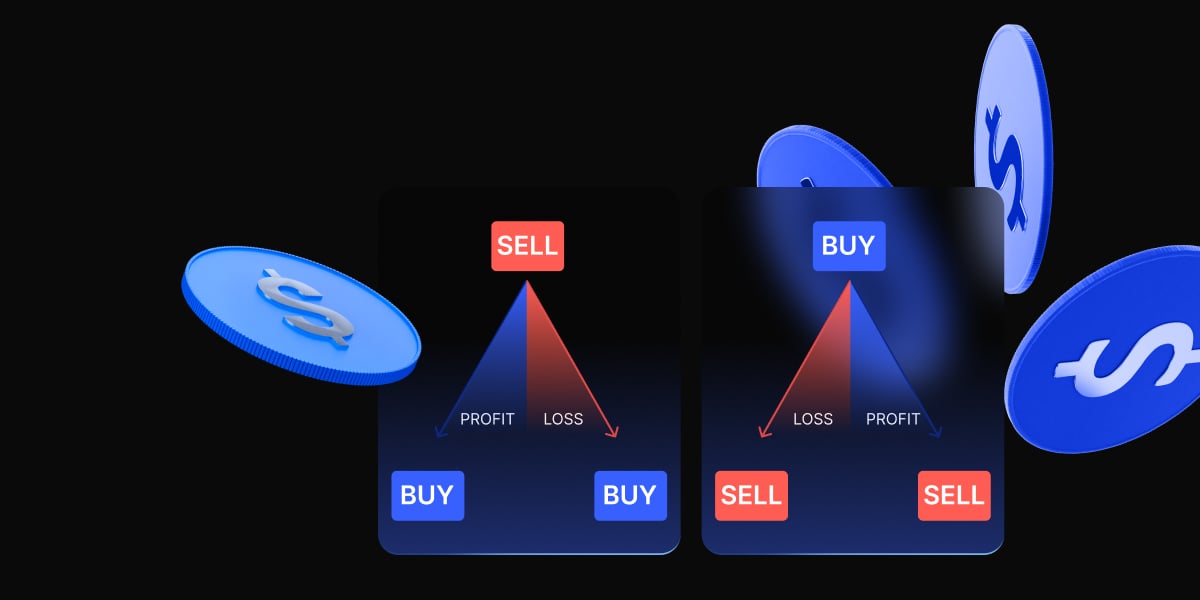In fast-paced financial markets, even the smallest price movements can offer opportunities for profit. This is where the concept of a trading tick becomes essential. Tick trading focuses on capturing micro price movements to gain an edge in high-frequency trading or short-term strategies. In this article, we’ll explain what a tick is, how tick charts work, and why tick trading strategies are popular among retail traders and professionals alike.
What is tick trading?
A tick in trading refers to the smallest possible price movement of a financial instrument, such as a stock or futures contract. It represents a single change in a security’s price, either up or down, and is used to record price changes in real time.
How a tick differs from a pip or a point
While a tick is common in stock trading and futures trading, a pip is used in the forex market to represent a fixed change in the fourth decimal place (0.0001), and a point typically refers to a one-unit movement in an index or futures contract. In contrast, a tick represents the smallest price increment set by the exchange.
Why ticks matter in high-frequency and short-term trading
In tick trading, every tiny movement—every tick—counts. Tick traders use this data to capitalize on tiny price movements with the help of advanced trading platforms, often executing multiple trades within seconds. The appeal lies in the possibility of quick profits and increased trading efficiency, especially in volatile markets.
What are the main components of tick trading?
Tick size and tick value
Tick size refers to the smallest price increment a security can move. For instance, a tick size of 0.05 means that the price can move in multiples of $0.05. On the other hand, tick value denotes the monetary value of one tick movement, which varies depending on the instrument.
Understanding the tick size and tick value is crucial because it determines how much a trader gains or loses per price movement. These are key components of any tick-based strategies.
How tick data is recorded
Every time a price movement occurs—regardless of direction—a tick is recorded. This constant stream of tick data builds a detailed view of market conditions, capturing every trade, quote, or change in bid/ask levels. This information forms the backbone of real-time market data and is often used in algorithmic trading software.
Where tick trading is most common
Tick trading is widely used in:
- Futures trading (especially for commodities and indices)
- Stock market (for highly liquid stocks)
- Index trading (e.g., S&P 500, DAX)
How do tick charts work?
Tick charts vs. time-based charts
Unlike traditional time-based charts, which plot price over fixed intervals (e.g., 1-minute, 5-minute), tick charts display a bar or candlestick after a set number of trades, such as 100 or 500.
What does a 100-tick or 500-tick chart mean?
A 100-tick chart generates a new bar after every 100 trades, regardless of the time taken. This offers a more dynamic view of real-time data, especially when market liquidity is high.
Advantages of tick chart trading
- Better visibility of market sentiment
- Reduces market noise by filtering low-activity periods
- Ideal for spotting entry and exit points
- Greater accuracy in volatile markets
When to use tick charts
Tick charts are commonly used in:
- Scalping strategies
- Day trading
- Momentum trading
- Breakout patterns
These charts offer clarity in market trends and help tick traders execute trades efficiently.
What strategies are used in tick-based trading?
Momentum-based strategies
These rely on tracking strong price movements. When the number of ticks increases quickly in one direction, it can indicate the start of a new trend. This is useful in momentum trading.
Breakout patterns
Tick trading strategies often revolve around identifying price consolidation followed by a breakout. Traders aim to jump in early and ride the momentum.
Scalping techniques
Scalping is one of the most common tick trading approaches. It involves executing multiple trades to capture small gains throughout the day, especially in highly liquid stocks.
Importance of volume and price action
Tick trading focuses on volume, price action, and real-time market data instead of technical indicators. Traders often look for increased number of trades and volume spikes.
What’s the relationship between market liquidity and tick trading?
The number of ticks in a time frame reflects market liquidity. More ticks mean more trading activity and a more liquid market.
- Market liquidity ensures smoother entry and exit points
- Higher liquidity leads to tighter bid ask spreads
- Better liquidity means tick traders can avoid slippage
How do transaction costs affect tick trading?
Spreads, commissions, and slippage
Transaction costs can eat into profits quickly for tick traders. These include:
- Bid/ask spreads
- Broker commissions
- Slippage during volatile periods
Choosing a broker with low fees and fast execution is essential for tick trading.
Scalping vs cost
Since tick trading focuses on small gains, high costs can make strategies unprofitable. That’s why retail traders often look for low-cost brokers and automated trading systems.
Is tick trading suitable for retail traders?
Pros
- Fast access to real-time data
- High flexibility in trading strategies
- Enhanced control over entry and exit points
Cons
- Requires fast internet and advanced trading platforms
- High risk of overtrading
- Need for strong risk management techniques
For some, tick trading offers an engaging and potentially rewarding way to navigate the financial markets. For others, the speed and attention required might introduce unnecessary market risks.
Final thoughts: Understanding tick trading for success
To succeed in tick trading, one must grasp the importance of:
- The tick size and tick value
- Interpreting tick data and market movements
- Adjusting to varying market conditions and market sentiment
By mastering tick chart trading, traders can reduce market noise, spot trends earlier, and make smarter decisions. While not for everyone, tick trading can be highly effective in the hands of a skilled and disciplined trader.
Whether you’re analyzing the trading tick option chain or developing new tick trading strategies, understanding how each tick represents a piece of the market puzzle is the first step to becoming a successful tick trader.
Trading involves risk.
The content provided here is for informational purposes only. It is not intended as personal investment advice and does not constitute a solicitation or invitation to engage in any financial transactions, investments, or related activities. Past performance is not a reliable indicator of future results.
The financial products offered by the Company are complex and come with a high risk of losing money rapidly due to leverage. These products may not be suitable for all investors. Before engaging, you should consider whether you understand how these leveraged products work and whether you can afford the high risk of losing your money.
The Company does not accept clients from the Restricted Jurisdictions as indicated in our website/ T&C. Some services or products may not be available in your jurisdiction.
The applicable legal entity and its respective products and services depend on the client’s country of residence and the entity with which the client has established a contractual relationship during registration.




